How to Create a WordPress Registration Form With Stripe
Are you interested in building a WordPress registration form integrated with Stripe?
WordPress does not provide built-in options for collecting payments or control over the payment process on your website. This can be an issue for membership and subscription sites aiming to register users when they subscribe to a membership plan.
In this post, we’ll walk you through how to create a WordPress registration form and checkout page that lets users make payments via Stripe during registration.
Table of Contents
The ultimate solution for setting up a Stripe registration form
ProfilePress is a comprehensive solution that enables you to create a complete membership site in WordPress.
Using shortcodes, it automatically generates essential membership pages, allowing you to set up membership plans and integrate popular payment methods.
With the Stripe Checkout integration, connecting your Stripe account to your WordPress membership site is effortless. This enables your website visitors to make payments using a variety of payment gateways, including Link, ACH Direct Debit, Apple Pay, Google Pay, Alipay, Bancontact, Bank transfers, BLIK, EPS, FPX, Giropay, iDEAL, Sofort, P24, Affirm, Afterpay, Clearpay, Klarna, Cash App Pay, GrabPay, WeChat Pay, SEPA debit, and Bacs Direct Debit, after completing a user registration form.
Creating a WordPress registration form with ProfilePress
This guide will outline the steps to create a WordPress registration form with Stripe utilizing the ProfilePress plugin.
To accomplish this, you will require a WordPress website and the ProfilePress plugin, enabling you to establish membership plans, link your Stripe account to your membership site, and allow logged-in users to make subscription payments using Stripe.
Step #1: Install and activate the ProfilePress plugin
To add the ProfilePress plugin to your WordPress site, follow these simple steps. Firstly, go to the “Plugins” tab and select “Add New.”
From there, upload the plugin’s ZIP file and click “Install Now.”

After installation, activate the plugin on your site.
To validate your license key, go to the “License” tab in the “Settings” section of ProfilePress. Then, enter your license key in the provided text field and click the “Activate License” button to proceed.
Step #2: Create a custom registration form
Once the ProfilePress plugin is installed and activated on your WordPress site, you can create a custom registration form. To get started, navigate to ProfilePress → Forms & Profiles and click the Add New button.
Click on the Drag & Drop Builder to continue. You can also use the Shortcode Builder if you are an advanced user.

Now, give your registration form a title and select Registration using the Select Form Type section.
ProfilePress lets you create a registration form using a pre-designed template that you can edit or create a custom registration form from scratch. For demonstration purposes, we’ve decided to use the Smiley template. Click on the Select Template button to continue.
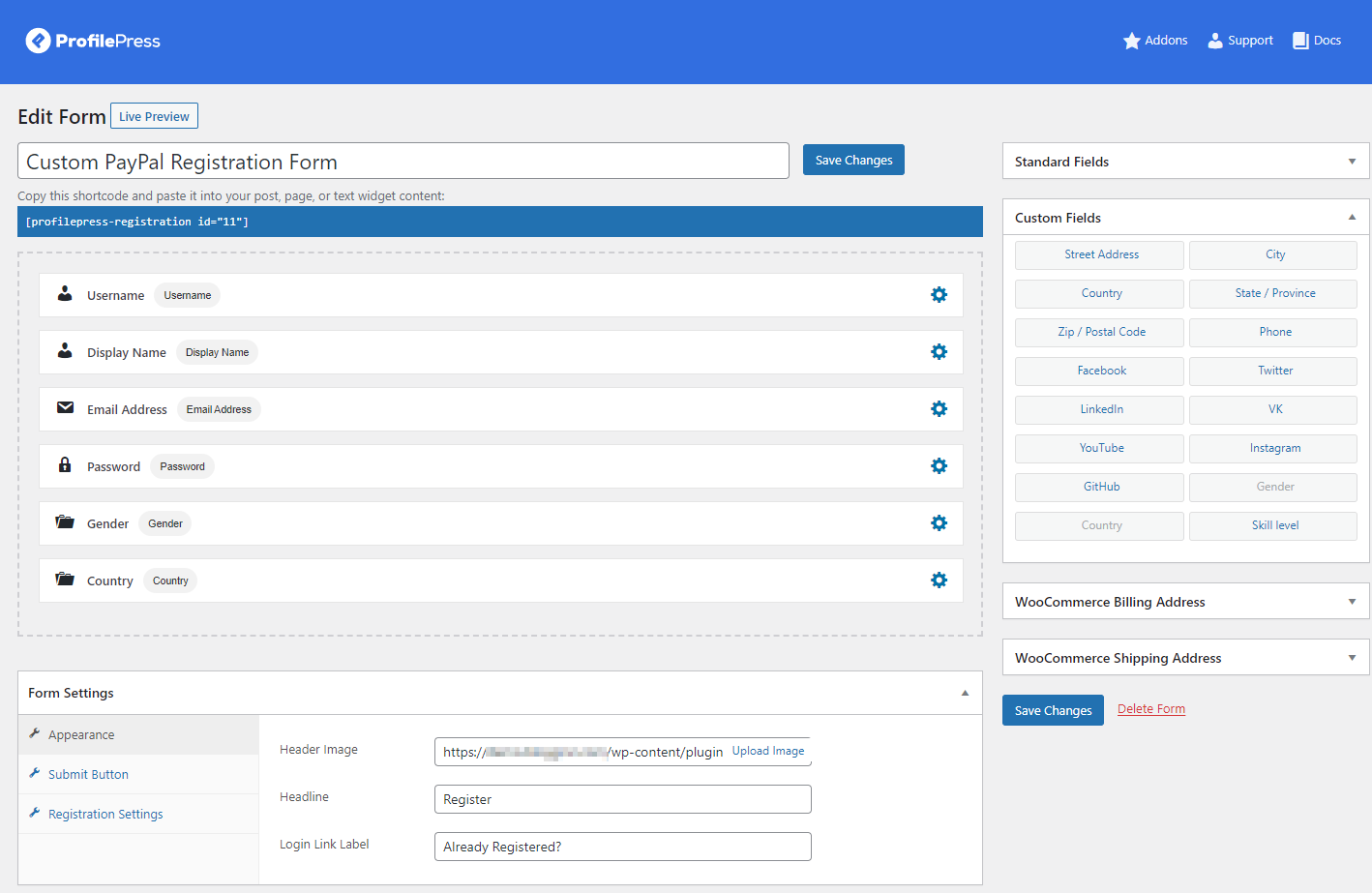
This will automatically redirect you to the form edit page. This is where you can start adding or removing fields from your registration form. In addition, ProfilePress offers a wide range of standard and custom fields you can drag and drop into your custom registration form.
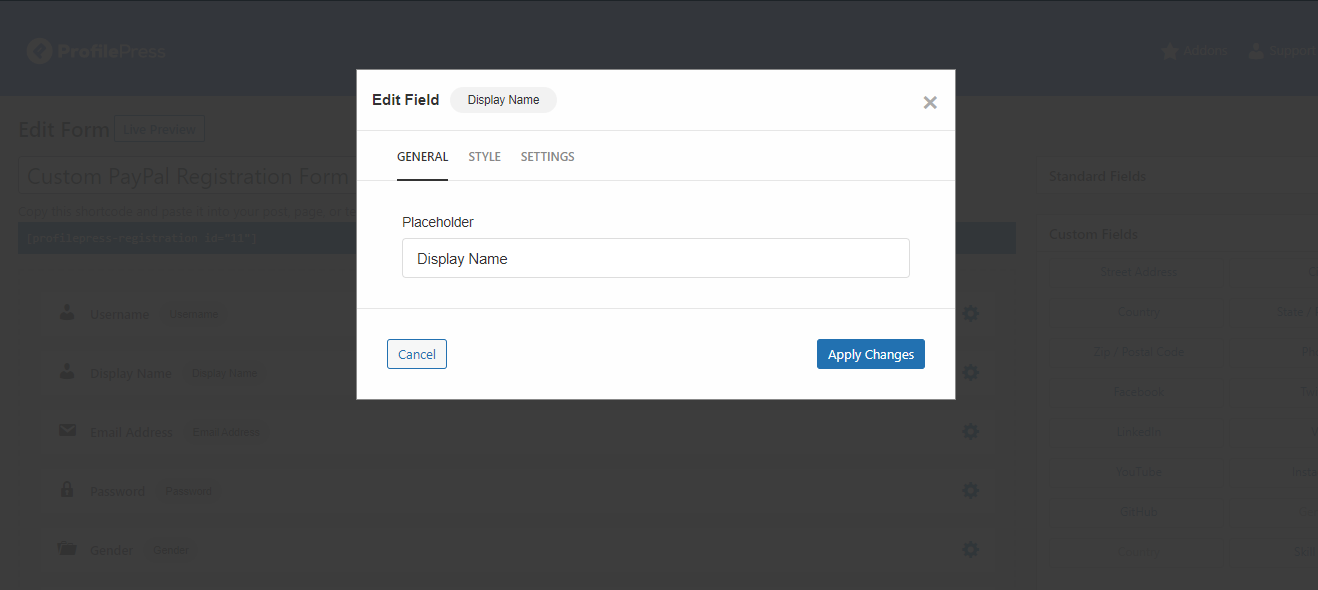
You can edit the default fields to make them look more exciting or relevant to your audience by clicking the little settings icon next to each field. For instance, you can rename the “Display Name” field to “Nickname” to make it more user-friendly.
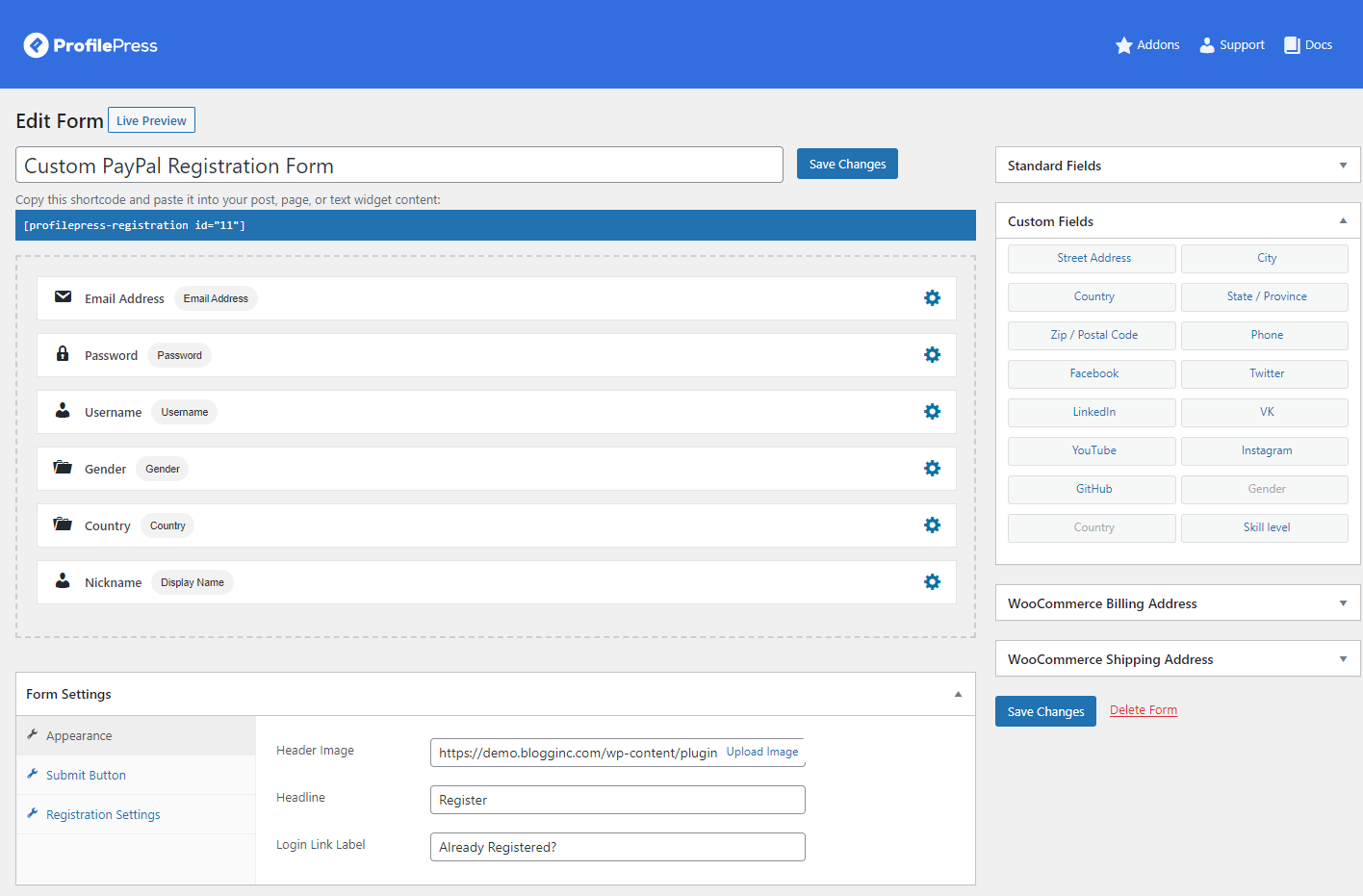
One great feature of ProfilePress is that it makes it very easy to change the layout of your custom registration form by simply dragging and dropping fields into whatever order you want. This lets you improve the user experience on your WordPress site and makes it easier for new users to sign-up for a membership plan.
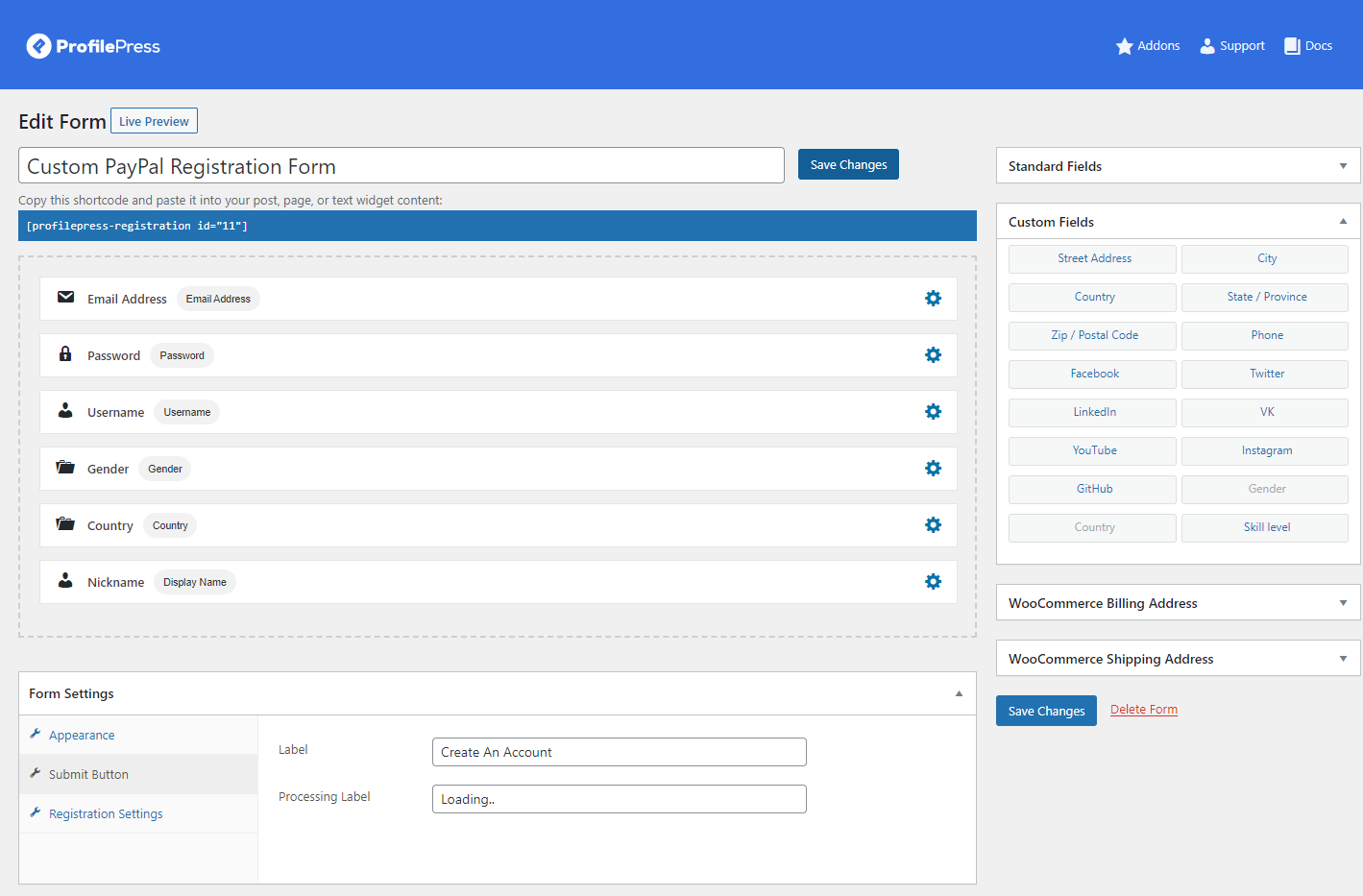
In addition, using the Form Settings meta box below, you can change the appearance of your registration form. For example, you can add custom labels to the Submit button to change the call to action to something more actionable, like Join Now.
Once you’re ready, click on the Save Changes button to continue. Also, remember to copy the form’s shortcode to your clipboard.
Step #3: Set up your Stripe account
To accept payments with Stripe on your WordPress site, integrate your Stripe account using the plugin’s settings. For this, navigate to ProfilePress → Settings and click on the Payments tab from the top.
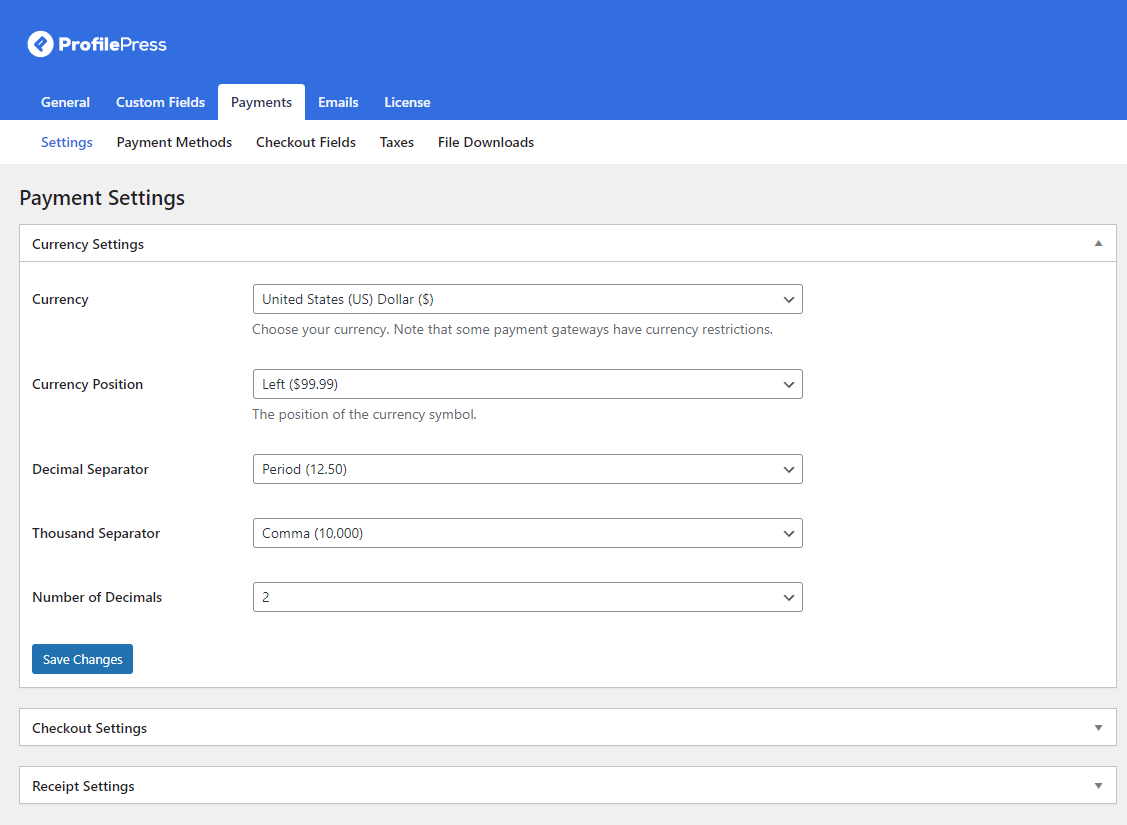
From here, you can set basic currency settings for users to make payments on your WordPress site. Configure the settings and click the Payment Methods link option from the top to set up a Stripe account.
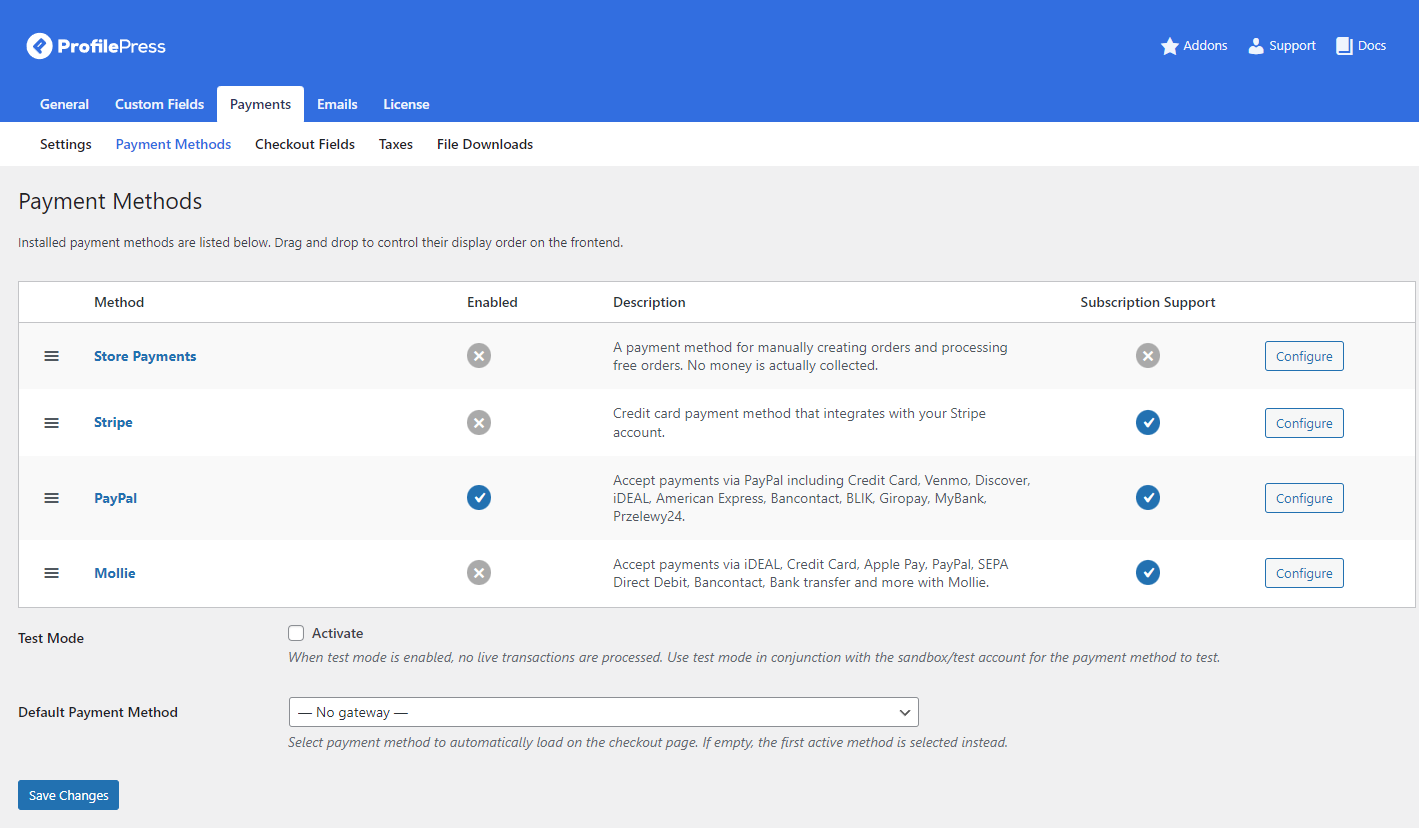
Click the Configure button next to the Stripe payment method.
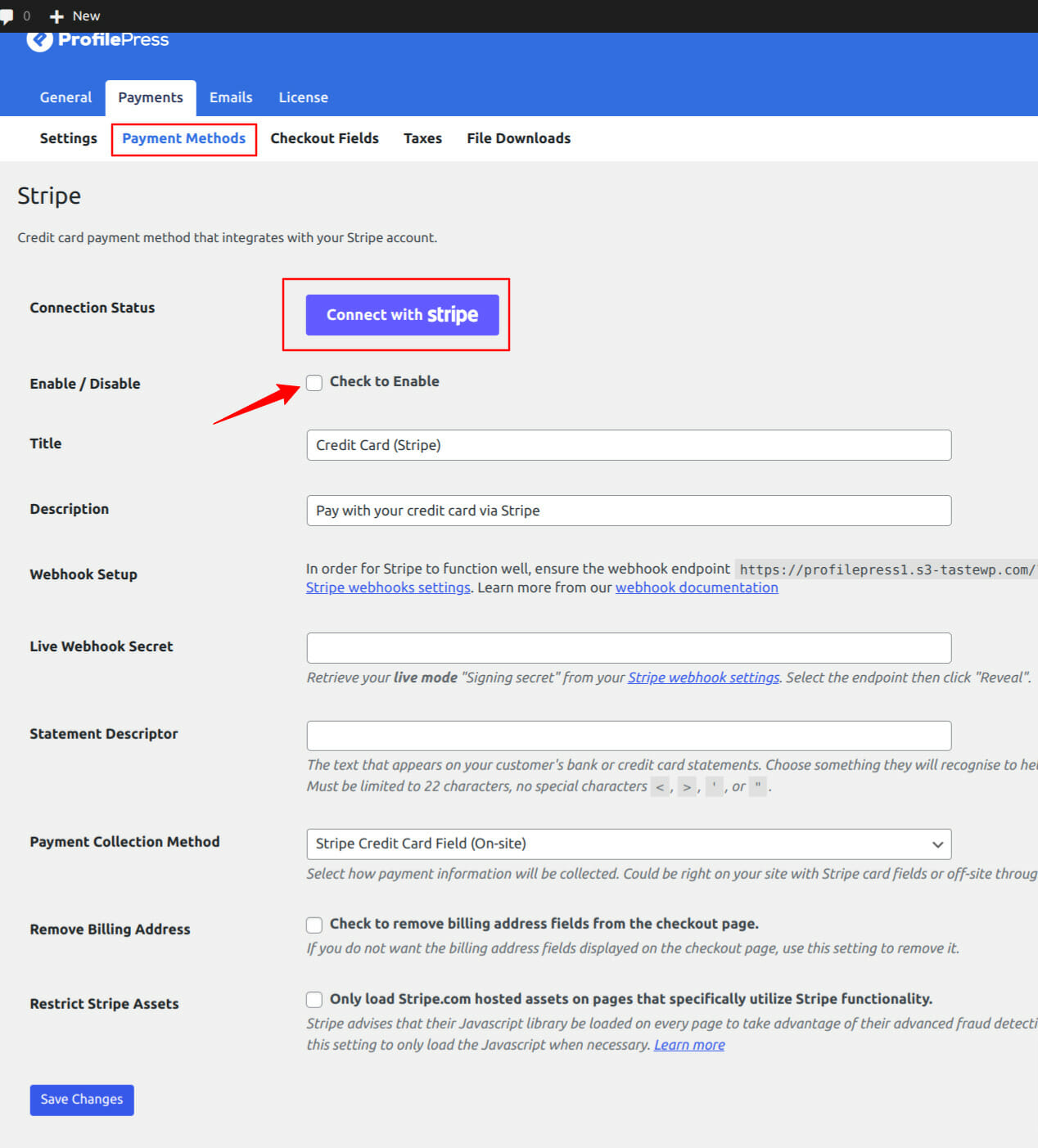
You can enable the Stripe payment method via the Enable / Disable checkbox.
Next,
click the “Connect with Stripe” button to connect ProfilePress to your Stripe account. Learn more about setting up the Stripe integration.
Once you’re done, make sure to click on the Save Changes button to continue.
Step #4: Set up Membership plans & Restrict membership content
Now with a Stripe account integrated into your WordPress site, you can let users pay for a membership plan via Stripe after they create an account using the custom registration form.
To quickly set up a membership plan using ProfilePress, navigate to ProfilePress → Membership Plans and click the Add New button.
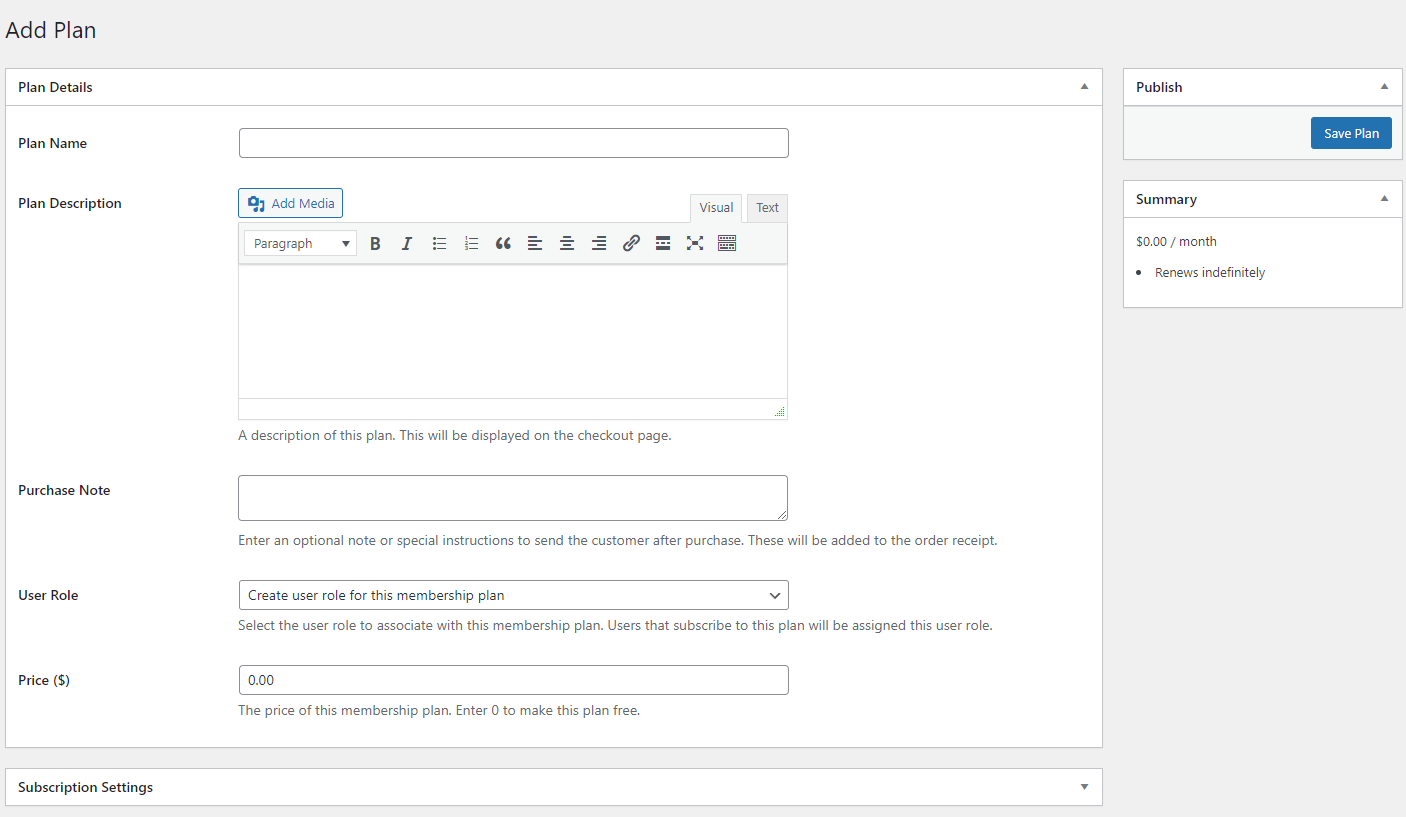
After giving your membership plan a name, description, and price, you can use the Subscription Settings meta box to define your membership plan’s duration.
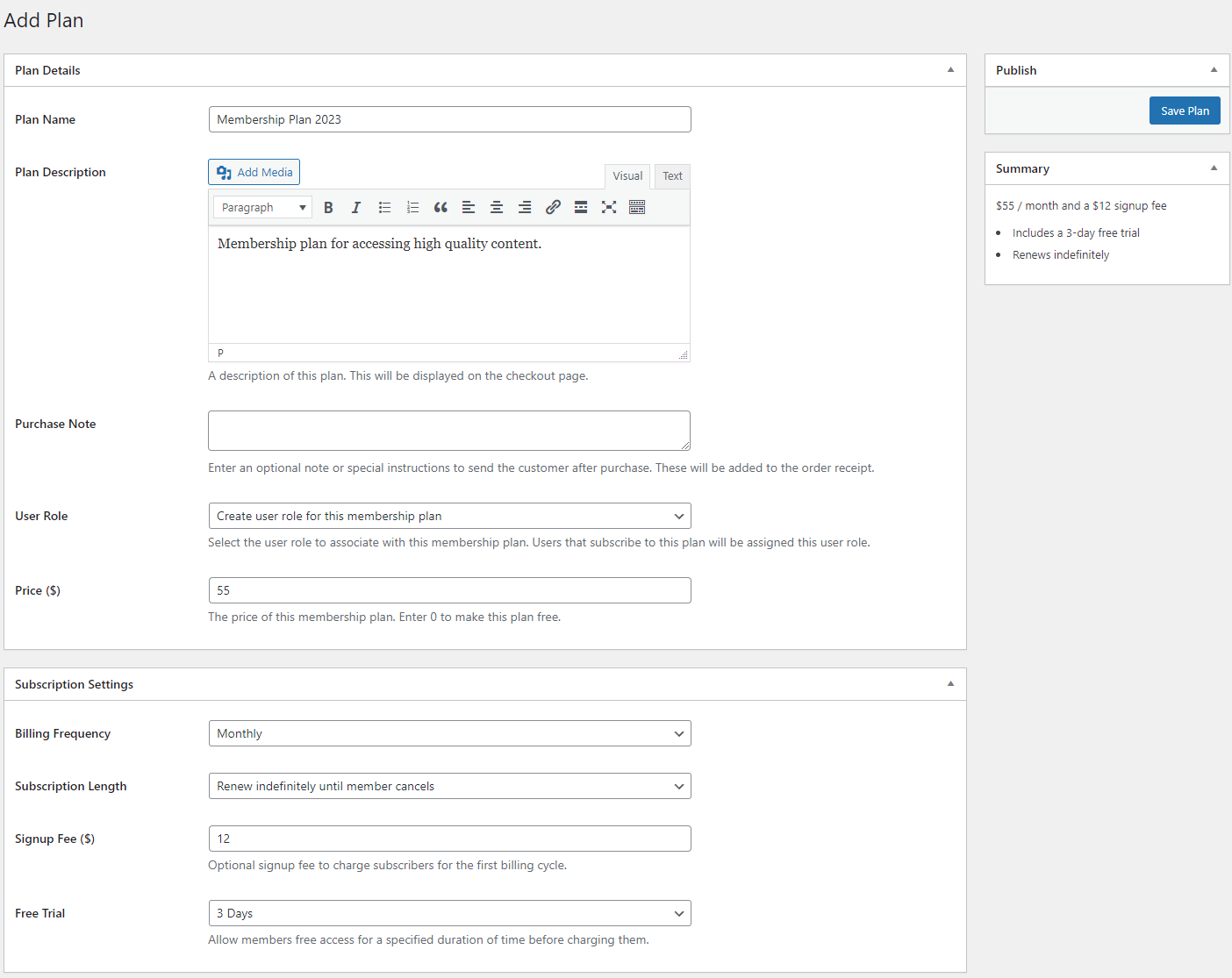
The Billing Frequency dropdown menu lets you decide the length of your membership plan. For instance, you can create a monthly membership plan or charge customers a one-time fee.
In addition to setting a Signup Fee, users can try out the membership plan using the Free Trial dropdown field. Once you’re done, make sure to click on the Save Changes button to continue.
After saving your changes, a checkout URL for the plan will be generated. Please take note of the URL, as we will need it later.

We can start creating a content restriction rule that only allows registered members to access premium content on your WordPress site. This way, users who haven’t subscribed to the membership plan will need to purchase it via Stripe after creating an account using the registration form.
To create a content restriction rule, navigate to ProfilePress → Content Protection and click the Add a Protection Rule button.
Once you specify the Title, you can use the Content to Protect meta box to select the content restricted to members only on your WordPress site.
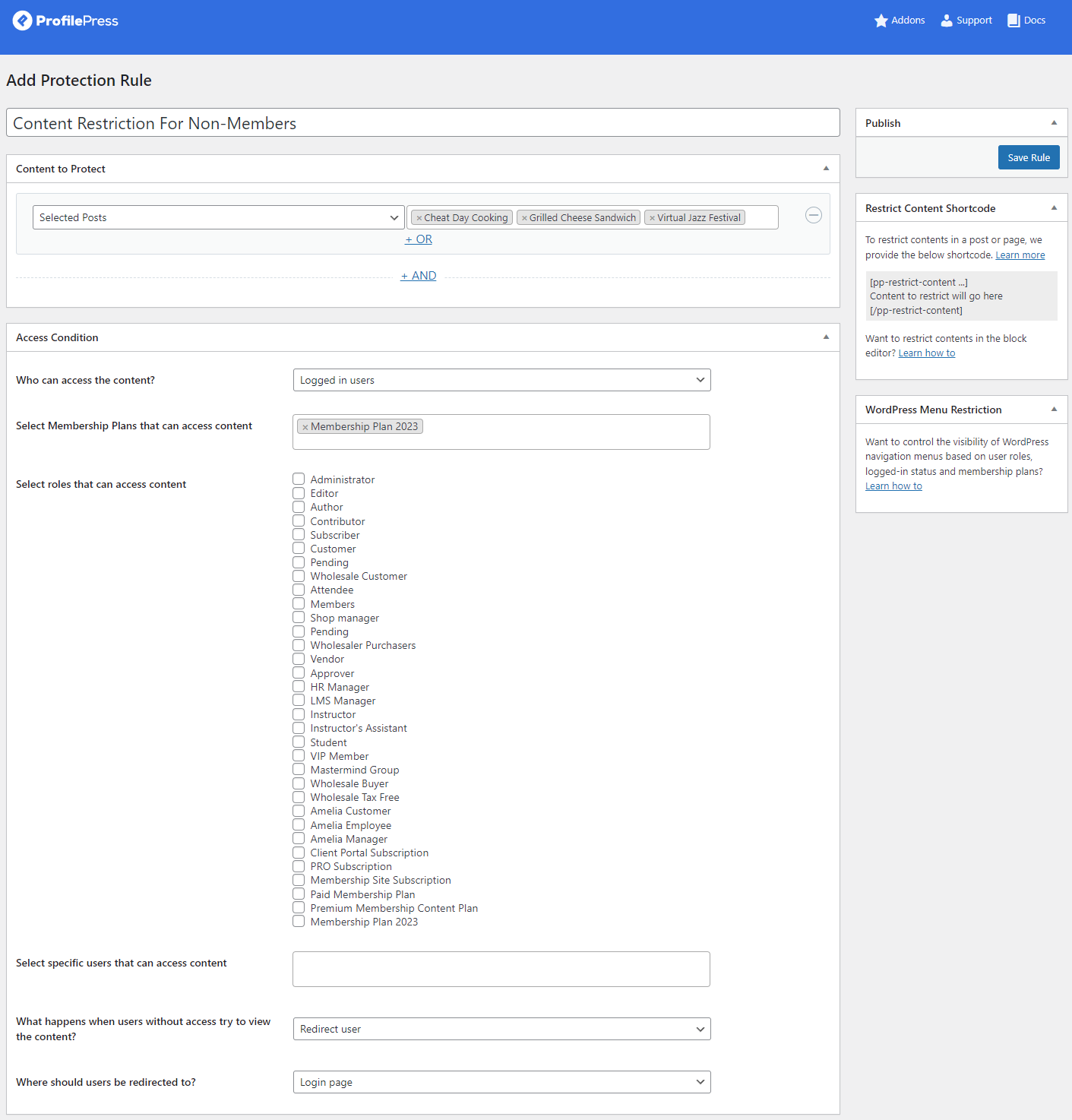
For example, select the Selected Posts or Selected Pages option and specify the posts or pages with members-only content. Once that’s done, use the Who can access the content? dropdown menu under the Access Condition meta box to select Logged in users.
Now, use the Select Membership Plans to access the content field to select the membership plan we created earlier. In addition, you can specify what happens to unauthorized users when they try to access members-only pages on your WordPress site using the What happens when users without access try to view the content? field at the bottom.
Once you’re ready, click on the Save Rule button to continue.
Step #5: Let users make payments after they register on your WordPress site
The great thing about ProfilePress is that it automatically creates an optimized checkout page for your WordPress site. All you need to do is save the checkout shortcode on the page to make your checkout.
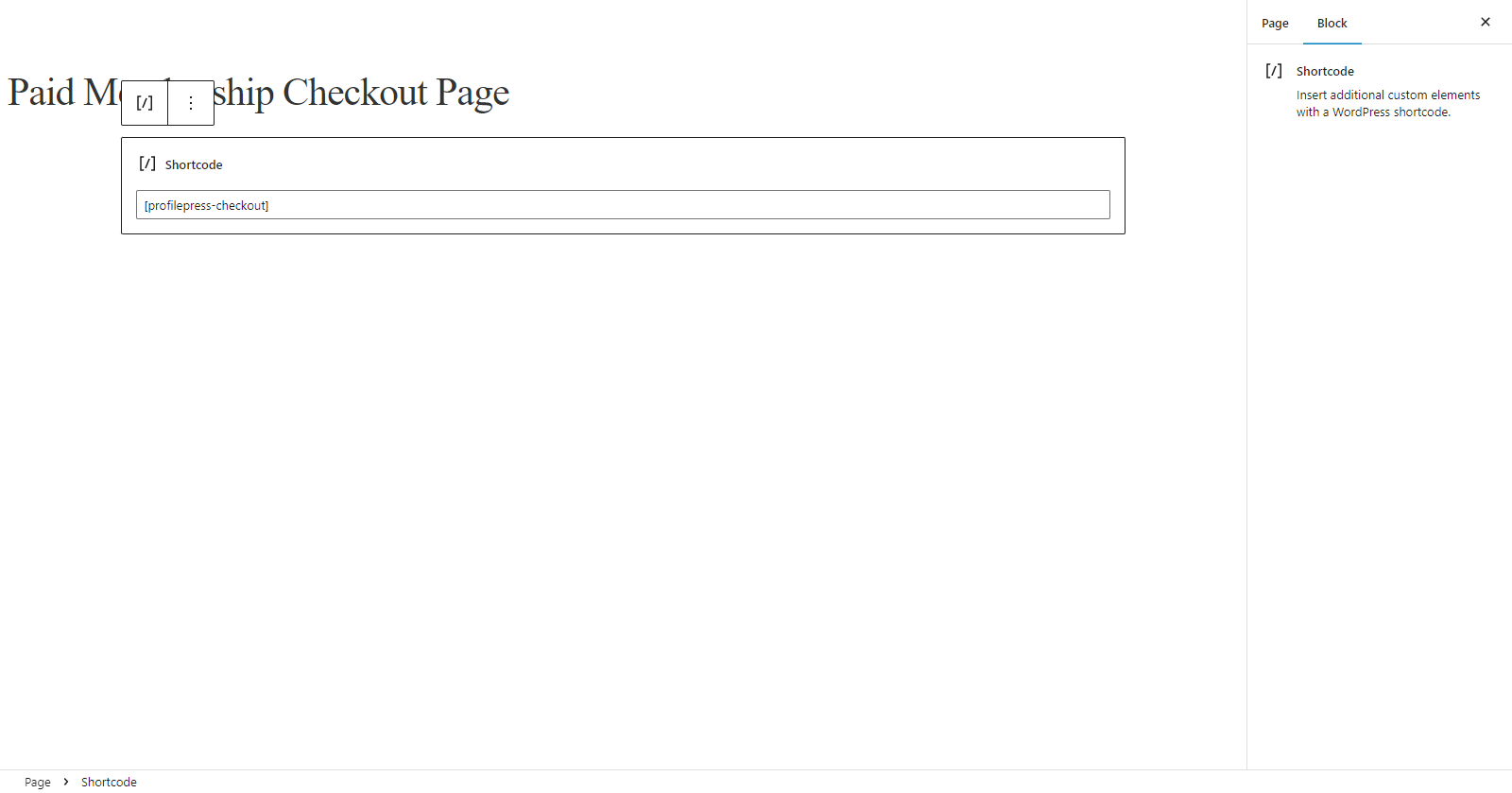
Similarly, you must create a new registration page with the custom registration form shortcode we copied earlier.
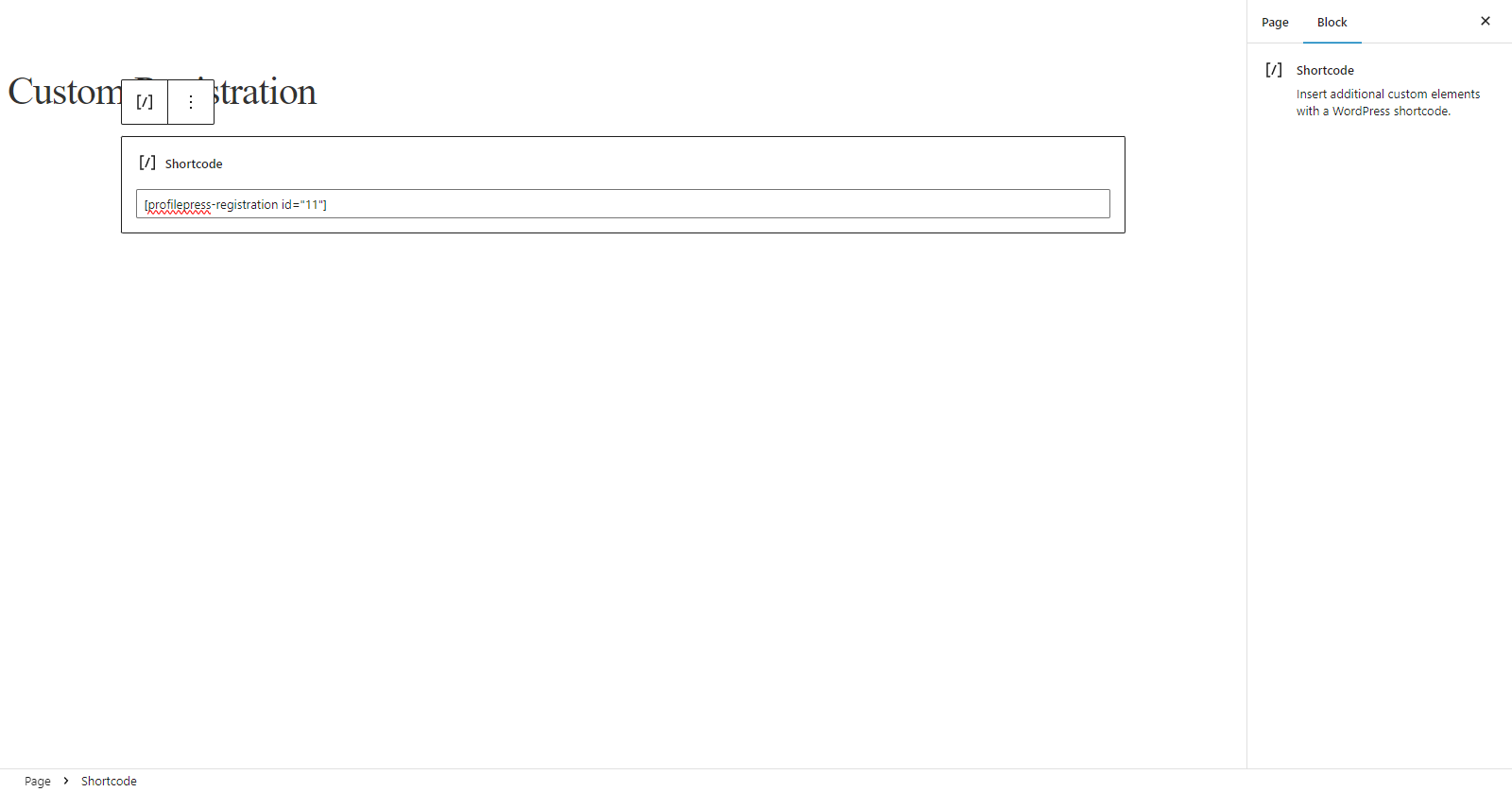
Now, navigate to ProfilePress → Settings and click on the Pages section under the General tab.
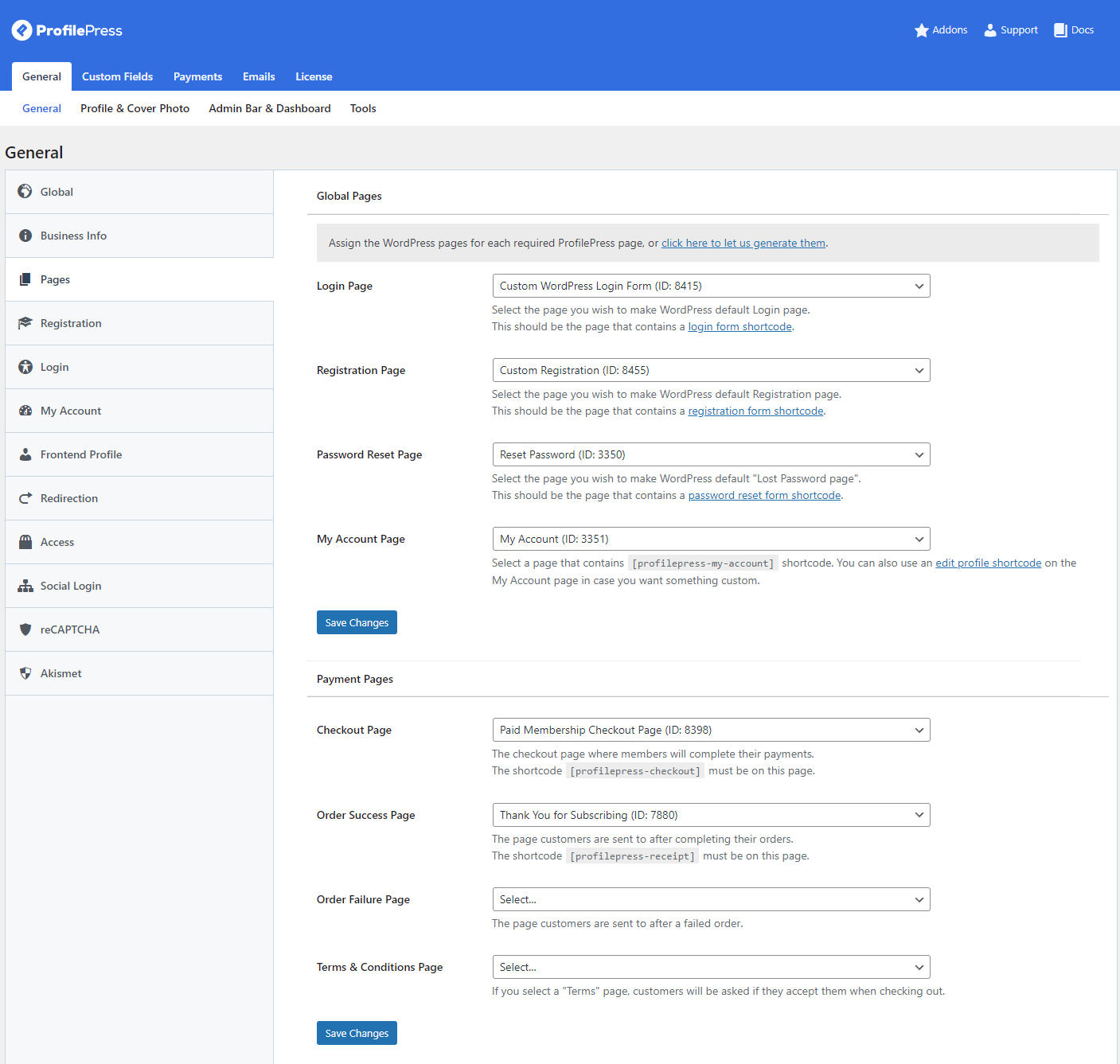
Using the Registration Page field, select the page that has the custom form shortcode. For the checkout page, use the Checkout Page dropdown menu to select the page with the ProfilePress checkout shortcode. Once you’re ready, click on the Save Changes button to continue.
When visitors visit the registration page, they will see the registration form they can use to sign up for your WordPress site.
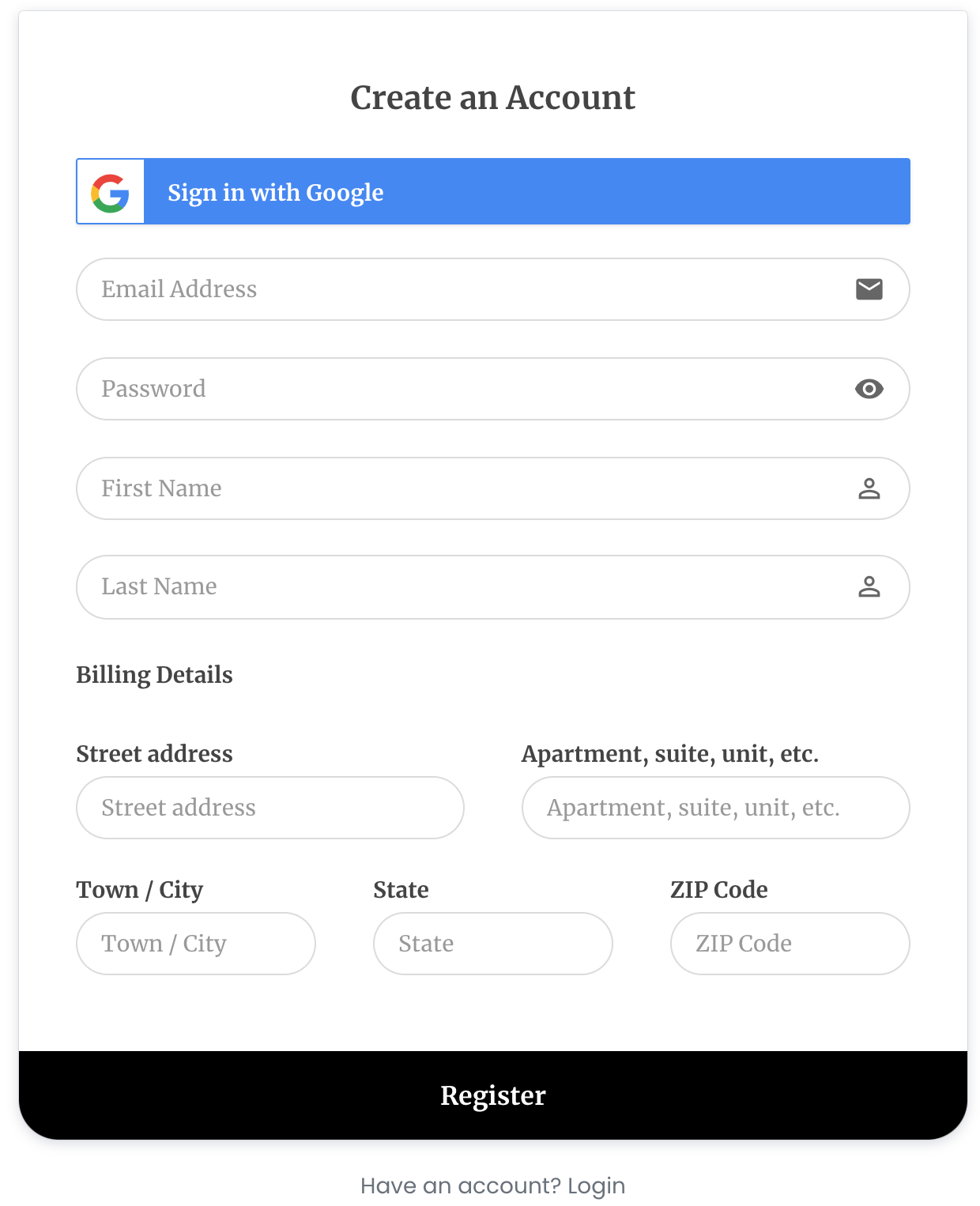
After registration, we need to automatically redirect them to the checkout page where they can purchase or subscribe to the membership we created earlier via Stripe. To do this, we need to modify the registration form shortcode to include the membership plan checkout URL as shown below, where https://xyz.com/checkout/?plan=1 is the checkout URL of the membership plan.
[profilepress-registration id="3" redirect="https://xyz.com/checkout/?plan=1"]Below is a membership plan checkout page with the Stripe checkout option.
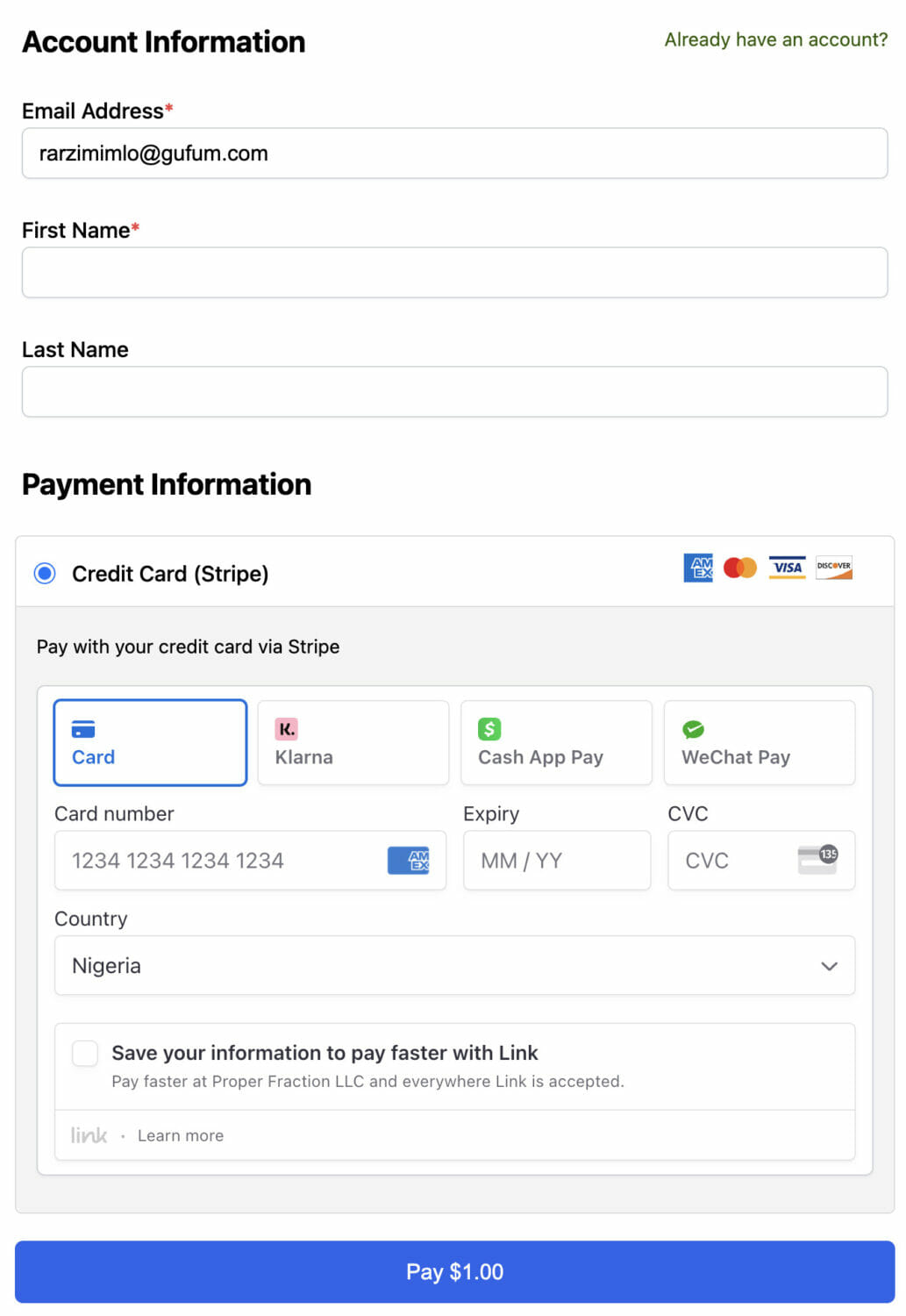
If you don’t want to create a custom registration form, you can use the membership checkout page as your registration form. When a user who doesn’t have an account on your site visits the checkout page, an account will be automatically created for them during checkout.
Conclusion
If you want to create a WordPress registration form and collect payments through Stripe, the ProfilePress plugin makes it simple.
The plugin streamlines the process of building a membership site by handling most of the setup work.
To get started, you need to set up content restriction rules and subscription plans, then integrate your WordPress site with your Stripe account.
After that, users can quickly and easily subscribe to your membership plans through Stripe while registering on your WordPress membership site.
Ready to take advantage of this easy-to-use plugin? Get ProfilePress now.